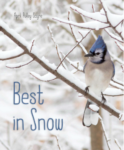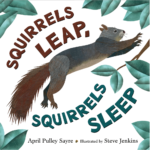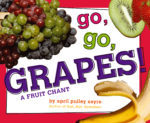April Pulley Sayre's Blog
January 30, 2020
Being Frog
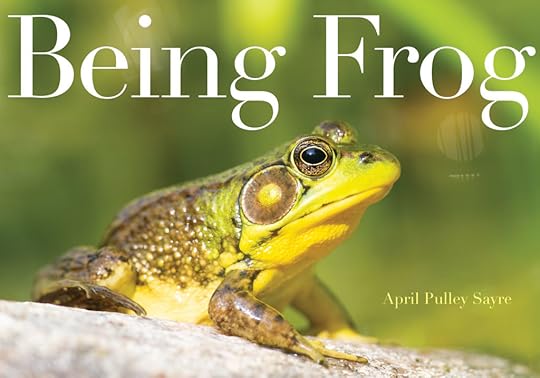
Being Frog hops into stores Feb 2, 2020! Read the Kirkus starred review or the Publisher’s Weekly starred review or the starred review from the Bulletin for the Center for Children’s Books. This picture book from Beach Lane/Simon & Schuster is about empathy and exploring another being’s world. Want to hear the frogs? Listen below. For a recent article about my work, check out the Booklist Online interview “Instilling Wonder Talking Science Writing With April Pulley Sayre”.
The actual Green Frogs from Being Frog by April Pulley Sayre
October 25, 2019
Being Frog
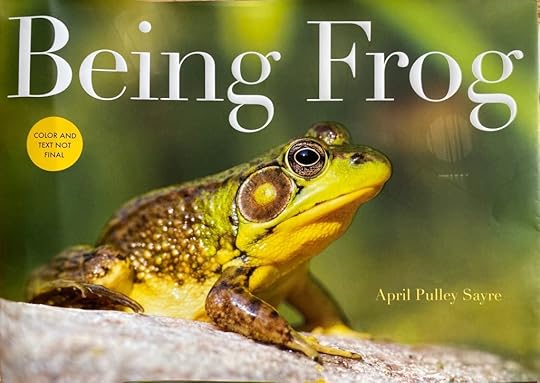
Being Frog hops into stores Feb 2, 2020! Read the Kirkus starred review. This picture book is about empathy and exploring another being’s world. Want to hear the frogs?
The actual Green Frogs from Being Frog by April Pulley Sayre
November 12, 2018
Thank You, Earth Plus 3 New in 2019

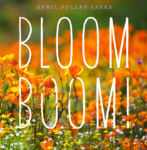
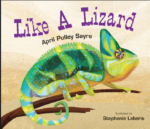

2018 brought Warbler Wave (see post below) and Thank You, Earth. New in 2019 will be three books: BLOOM BOOM, my latest photo-illustrated book from Beach Lane/Simon & Schuster, celebrates plant growth, wildflower bloom, and botanical garden tulip/daffodil display. It arrives Feb 2nd in time for Valentines Day! Kirkus already gave it a starred review!
Then it’s LIKE A LIZARD, illustrated by Stephanie Laberis, from Boyds Mills Press. It’s a preschool imitate-and-learn fest for young readers and reptile fans.
Finally, there’s DID YOU BURP? How to Ask Questions (Or Not) in early August, illustrated by Leeza Hernandez for Charlesbridge Publishing. It’s a unique nonfiction/fiction mix that allows kids to play with question forming via a group of fictional characters in a classroom setting.
January 6, 2018
New Book Backstory: Warbler Wave
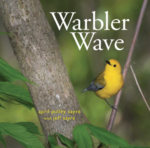 Warbler Wave will be released by Beach Lane, Simon & Schuster on February 13, 2018. See some spreads on S&S website. This book is the fulfillment of a dream, part of my life goal to share wonder. The text and photos are by me (April), with a bit of help from Jeff (a couple of photos, years of camera carrying, pointing out warblers, loving support, reviewing text, scientific fact checking, driving thousands of miles, 28 years of marriage, daily partnership in learning about nature). We are both birders and the migratory journey of these amazing avian athletes is the highlight of our year. Below are some identification notes and discussion of the birds in the book.
Warbler Wave will be released by Beach Lane, Simon & Schuster on February 13, 2018. See some spreads on S&S website. This book is the fulfillment of a dream, part of my life goal to share wonder. The text and photos are by me (April), with a bit of help from Jeff (a couple of photos, years of camera carrying, pointing out warblers, loving support, reviewing text, scientific fact checking, driving thousands of miles, 28 years of marriage, daily partnership in learning about nature). We are both birders and the migratory journey of these amazing avian athletes is the highlight of our year. Below are some identification notes and discussion of the birds in the book.
Warbler Wave: Behind the Book
Identifying the Birds
In Warbler Wave, we tried to introduce a little of the feel of birding into the book: seeing birds from different angles and peeking around plants. So we didn’t always use our clearest, field guide type photo for each stanza. (Jeff is a field guide co-author so we take field guide photos very seriously. If possible, a photo for a field guide needs to clearly show the marking or markings that distinguish the organism from others.)
Perhaps you’ll want to use Warbler Wave like an armchair birding excursion. Read it with someone in your community who knows birding. Or pull out a field guide to birds or, specifically, warblers, and see which birds you can identify. Then use the notes below to see if you were on track. Happy warbler watching!
For Parents, Educators, Reviewers
A Note About Group Names
Some people lump the warblers found in this book under the label Wood-warblers. This practice used to be more common, and can still be found in a few of the popular field guides still in print, but we purposefully chose not to do so. Instead, we followed the trend of other field guides in our backmatter by referring to this grouping of birds as Wood-warblers.
One reason is that as an introductory text to birds in general, and warblers specifically, such details are not necessarily helpful. This is even more true when such names are not universally used or accepted. What some people refer to as Wood-warblers, others call New World warblers, while still others avoid the potential confusion and simply say warblers. We chose the last option.
Although it is possible to encounter many of the New World warbler species in woodlands during migration, not all of them exclusively or even primarily nest in forested areas (woods). Furthermore, many Old World warbler species can be found in woods as well. Lumping a subset of birds into a Wood-warbler group fails to recognize these facts. This is one reason the label of New World warblers is often preferred. The label Wood-warbler is a holdout from less ecologically precise times.
Confusing the issue even more is that there is an actual warbler species with the common name Wood Warbler (Phylloscopus sibilatrix). It is a rather common species breeding throughout temperate and northern Europe into parts of western Asia. It’s in the Old World warbler grouping, not the New World warbler grouping.
As this example clearly demonstrates, the term Wood-warbler and common name Wood Warbler could easily be confused. As the two don’t even exist in the same loose biogeographic grouping — one is in New World warblers, the other is in Old World warblers — it is probably best to avoid the potential confusion. When presenting new scientific concepts, especially introducing young readers to new groupings of organisms, it’s often better to focus on general details and not get too pedantic. As readers advance they can learn more of the nuances, and controversies, of a given field of study.
Changing Warblers
Like fall leaves in temperate forests, the color and pattern of some species of warbler can change with the seasons. Not all species undergo such major transformations in appearance during their molt, but some do. Of course, the process a bird undergoes when its feathers change color is not at all similar to what causes a tree’s leaves to change!
All species of warbler undergo a fall molt (usually beginning after nesting period and ending by the time fall comes around). Molt can continue into the migration and not be completed until the bird arrives on its wintering grounds. The fresh set of feathers replace those that have become worn or have faded. Molt also can help reduce feather parasites. A freshly molted bird can look very crisp and clean, much different than it may have looked at the end of the breeding season before molting.
Confusing the issue even more is that there are some species of warbler that undergo a fall molt that not only provides the individual with new, fresh feathers, but also changes its colors, and sometimes patterns, from breeding plumage. Birders sometimes refer to these species as confusing fall warblers.
Warblers in Breeding Season
When springtime approaches, and often before they begin their northward migration from their wintering grounds, warblers transform again, molting into breeding plumage. This spring molt begins in late winter. For some individuals the molt ends before they reach their breeding grounds. Other individuals are still in the process of completing their molt while in migration or when they have arrived at their breeding grounds.
So during the spring migration time, it is not uncommon to see a mixture of colors or even patterns on individuals of the same species of warbler. This can make identifying some warbler species more challenging and fun.
Birds of a Feather
In some warbler species, the plumage of adult male and female warblers is very similar. In others, adult males look different than adult females. When it comes to immature warblers, there are some warbler species where the immature birds look like both adults. But there are other species were the immatures look like drab adult females.
In the descriptions below, we have chosen to provide only a few of the identifying markings of the breeding adult male and female warbler (as encountered in spring and summer). When helpful, we’ve noted some of the differences between sexes that can be used in making an initial ID. Discussing all the variations (if any) between adults of both sexes and immature individuals is beyond the scope of this basic guide. For more detailed insights, please purchase a recent field guide to the birds of your area.
Going Further
For a more detailed introduction to the birds (and other organisms) in your area, we suggest purchasing one of the regional field guides in the Kaufman Field Guide to Nature series. For a more expert and in-depth field guide of the birds of North America, we suggest the Kaufman Field Guide to the Birds of North America.
Warbler Identifications
Front Cover (Jacket Cover)
Prothonotary Warbler (Protonotaria citrea). Adult Male.
Jeff and I call male prothonotary warblers “tennis balls” because for a warbler, they are fairly large and can appear rounded at times. This, combined with the fact that the bright golden-yellow feathers of the males seem to glow in the green of the forest, makes it easy to conjure up the tennis-ball image. Both sexes have unmarked blue-gray wings and tails. Adult females are not as bright as the males. In one place where we photograph birds, on the shore of Lake Erie, a number of the Prothonotary Warblers stay and nest, instead of moving northward with the other warblers.
Front Jacket Flap
Magnolia Warbler (Setophaga magnolia). Adult Male.
With their bright yellow breasts adorned with streaky black feathers (sometimes creating the appearance of a necklace), Magnolia Warblers are a sight to behold. Adult males have a gray crown that contrasts with their black facial mask and white eyebrows. Their backs are often black and their two white wing bars appear to be joined, creating an obvious white wing patch. Adult females have a more muted, grayish facial mask that does not contrast as much with their grayish crown and they lack the white eyebrows. Their olive-gray backs are streaked with black and they have two distinct white wing bars instead of a more pronounced white wing patch. The black streaking on the chests of adult male birds is often more intense than on females. Like a few other warbler species, Magnolia Warblers also have a yellow rump.
Page 1 Title Page
Black-throated Green Warbler (Setophaga virens). Probable 1st-Spring Male.
Both sexes are similar, having an olive green crown and back and two white wing bars. Adult males have an obvious black chin and throat and their sides and flank feathers have bold black streaking. Adult females and immature birds lack the bold black in their throat and chin, that region usually being yellow or sometimes white (although there can be faint black streaks). Also, the side and flank feathers on adult females and immatures are lightly to faintly streaked with black — not as bold looking as in adult males.
Based on the fact that this bird’s side and flank feathers are lightly streaked with black and not boldly streaked, it might make you think that the individual in this picture is an adult female. But looking at its chin and throat you can clearly see its chin and throat is black and not yellowish or whitish. This individual is most likely a 1st-spring male, having hatched the previous late spring or early summer. It’s in the process of molting out of its juvenile feathers into its adult male feathers. It’s called a first spring bird because, although it hatched last spring or summer, this will be its first full spring. So whereas this individual is a male, it does not yet show the appearance of an adult male in bold breeding plumage. Next spring it will appear as a crisp adult male.
Also note that the male on the cover appears to have a yellowish chest and belly. Whereas Black-throated Green Warbler males can have a slight yellowish wash on their chest (just below their black bibs), this individual’s underside appearance is being altered by the reflection of light off of the green leaves below. See Page Spread 14-15 for three examples of an adult male in breeding plumage.
Page Spread 2-3
Lake Erie from Maumee Bay Lodge, near Toledo, Ohio
Page Spread 4-5
Full moon over southeast Michigan.
Page Spread 6-7
Buildings, New York City.
Page Spread 8-9
Adult male Magnolia Warbler (Setophaga magnolia) in a Boxelder tree (Acer negundo). See previous description of this species under Front Jacket Flap comments.
Page Spread 10-11
Search/stalk:
Yellow Warbler (Setophaga petechia). Adult Male.
Adult males are bright yellowish olive and have a usually strong chestnut-red streaked chest and flank. Adult females and immature birds are a duller olive yellow and often lack the chestnut-red streaking — although some adult females may show a slight streaking, but it is nowhere near the male’s strong streaking. Even though the individual Yellow Warbler in this photo is seen from behind, it is clearly an adult male based on its body coloration. See the back jacket cover for an adult male from the front.
Wag/walk:
Northern Waterthrush (Parkesia noveboracensis)
Although the title of warbler is missing from this species’ common name, the Northern Waterthrush is nonetheless a type of warbler. Adult males and females, as well as immatures, are very similar in appearance. In fact, not only are the ages and sexes of this species similar looking, this species is also remarkably similar looking to a different species: the Louisiana Waterthrush (Parkesia motacilla). Whereas expert birders can often ID the two species in the field based on a few key differences in field marks, it is often best to rely on vocalizations to differentiate between the two species. The vocalizations of the Northern Waterthrush and Louisiana Waterthrush are very distinct and different.
Dainty diner:
Canada warbler (Cardellina canadensis). Adult male
Another warbler species that has a necklace (see the Front Jacket Flap description of the adult male Magnolia Warbler). An adult male in fresh breeding plumage has a stunning, obvious necklace of black streaky feathers that contrast with its bright yellow throat and chest. They also have a bluish gray, unmarked neck, back, tail, and wings. Males have the same bluish-gray head, punctuated with small black feather streaks toward the front of the head. Females are overall duller in appearance, showing a muted necklace. Males and females can look similar certain times of the year. Both sexes have a full yellowish eye ring
Page Spread 12-13
Yellow: Prothonotary Warbler (Protonotaria citrea). Adult Male. See discussion of species under the Front Cover (Jacket Cover) comments.
Blue: Black-throated Blue Warbler (Setophaga caerulescens). Adult male.
Both sexes have an obvious white patch on the wings, even some immature birds — although most may lack this otherwise key field mark. The white patch is large in the adult males. In adult females it is more of a white spot. Adult males are a striking bluish color with a black face, throat, and flanks. Females are a drab olive brown color.
Pattern: Chestnut-sided Warbler (Setophaga pensylvanica). Adult male.
Adult male and female birds appear somewhat similar, but adult males have significantly more chestnut coloration (on the sides of chest and flanks), a thin, dark black face mask, and a bright yellow crown. Adult females have a more olive-yellow crown, a muted, almost smudged black facial mask, and only a hint to a small amount of chestnut on the sides of their chest. Immature birds and winter adults look different than their spring and summer plumage.
Hue: Blackburnian Warbler (Setophaga fusca). Adult male.
Adult males are unmistakable. This was one of the warblers that ignited our passion for warbler photography. Seeing a freshly molted adult male Blackburnian Warbler in the spring is an experience that makes even the most seasoned birder gasp. Adult males have bright to brilliant orange to deep orange throats. Their heads have a black ear patch surrounded by more orange — but usually not as intense as the orange of the throat. The black back is streaked with white (not always possible to see), and there are two white wing bars that often appear joined into one large, white wing patch. There is a small streak of orange on the otherwise black crown. Adult females are more drab and show two white wing bars instead of the much large white wing patch of adult males.
Page Spread 14-15
They look: Black-throated Green Warbler (Setophaga virens). Probable 1st-Spring Male.
Lean: Blackburnian Warbler (Setophaga fusca). Adult male. See description in the Page Spread 12-13 comments above.
Grab. Glean: Black-throated Green Warbler (Setophaga virens). Adult male. Species discussed under Page 1 Title Page above.
Slurpers of spiders: Black-throated Green Warbler (Setophaga virens). Adult male. Species discussed under Page 1 Title Page above.
Page Spread 16-17
Flutter, catch: Blackpoll Warbler (Setophaga striata). Adult male.
Although it may appear that there are few usable field marks with which to identify the individual in this photo, it is actually an easy ID for experienced birders. This adult male Blackpoll Warbler clearly shows a black malar stripe — a line that separates the bird’s throat from its chin. Also visible is black streaking on its sides. The lowest edges of this male’s black cap is just barely visible as well. Another field mark used in conjunction with the above are its clearly visible orange legs. Adult birds in spring often have orange legs as this individual does. Females of the species usually more uniformly streaked, lack the dark black cap and obvious black malar stripes.
Check cracks: Palm Warbler (Setophaga palmarum). Adult male.
Both adult sexes look similar and sometimes it is not possible to separate individuals to sex — even during breeding season. But there are a few characteristics, that if present, can help distinguish between males and females during breeding season. The most obvious is the presence of a bright chestnut crown — as perfectly illustrated in the individual in our book. Also, adult males often have a bright yellow throat. Again, some adult males may be missing one or both of these key identifiers. One noticeable behavior of this species (across all ages) is that it tends to constantly pump its tail. Whereas other species pump, wag, or fan their tails, this behavior can often be diagnostic.
leaf backs: Black-throated Green Warbler (Setophaga virens). Adult male. Species discussed under Page 1 Title Page above.
Climb ridges: Prothonotary Warbler (Protonotaria citrea). Adult Male. See discussion of species under the Front Cover (Jacket Cover) comments.
Page Spread 18-19
For mosquitoes:
Northern Parula (Setophaga americana). Adult female. Adult males and females are similar in appearance but males have an obvious dual-colored chest band — a bluish one on top with a reddish chestnut one below. Females can also exhibit this field mark, but the bands are much fainter. Some females do not show a dual band at all, lacking the bluish band and only showing a light chestnut wash on the chest. Both sexes have a yellow throat and chest which contrasts with their white bellies. Their wings and backs are a bluish gray, except for their upper backs which are an olive-yellow color — not easily visible when seeing the bird from below. You can see this field mark on the individual in this photo and even better on the individual on the Back Jacket Flap. See Page Spread 20-21 for a front view on an adult female which has a noticeable, but faint, dual band.
moths:
Palm Warbler (Setophaga palmarum). Adult male. See description in the Page Spread 16-17 comments above.
midges:
Prothonotary Warbler (Protonotaria citrea). Adult Male. See discussion of species under the Front Cover (Jacket Cover) comments.
Page Spread 20-21
Sing:
Blackburnian (Setophaga pensylvanica). Adult male. See description in the Page Spread 12-13 comments above.
Preen:
Black-throated Green Warbler (Setophaga virens). Adult male preening. Species discussed under Page 1 Title Page above.
Scan:
Northern Parula (Setophaga americana). Adult female. This female exhibits a faint dual chest band. See species discussion on Page Spread 18-19.
Owl:
Eastern Screech Owl (Megascops asio). Reddish-brown color morph.
Woodchuck (Marmota monax).
Page Spread 22-23
No more time to rest: Magnolia Warbler (Setophaga magnolia). Adult male. See previous description of this species under Front Jacket Flap comments.
North to nest: Black-throated Blue Warbler (Setophaga caerulescens). Adult male. See description in the Page Spread 12-13 comments above.
Rise to fly: Cape May Warbler (Setophaga tigrina). Adult male.
A gorgeous yellowish warbler with darkish accents. Adult males have a bright yellow throat that is usually clear but can be streaked. They have a bright yellow chest and belly punctuated by black streaking. Two of the most obvious field marks for adult male’s of this species are their large chestnut ear patch accentuated by a yellow collar and their white wing patch. They also often have a black cap. Adult females are more drab with a grayish-brown ear patch, a duller collar, and a white wing bar that can look more like a thin, white line. They can appear more finely streaked on their Chest and flanks.
Page Spread 24-25
Call in the night:
Lake Erie shoreline from Maumee Bay,
Humans: Homo Sapiens
Page Spread 26-27
Calling zeep, zeep, zeep: Oak trees, leaves beginning to emerge in Spring
Pages Spreads 28-29 and 30-31
A Migration Marathon
Oak trees, leaves fully emerged, Indiana
Back Jacket Flap
Northern Parula (Setophaga americana). Adult female. Species discussed under Page Spread 18-19 comments above.
Back Jacket Cover
Yellow Warbler (Setophaga petechia); Adult Male in crabapple tree, Michigan. See species description above for pages 10-11.
March 23, 2017
New Book Backstory: Full of Fall
 Full of Fall, my new photo-illustrated picture book, will be released by the superb team at Beach Lane/S&S in September, 2017. Many devoted readers had questions about species and details in Raindrops Roll and Best in Snow. (Readers, thanks for embracing Best in Snow, which received four starred reviews and lots of coverage nationwide!) Below I’ve shared more details, in an informal way, for those of you digging into Full of Fall. I’m busy writing, traveling, and photographing for the release of four books in 2018 and 2019.
Full of Fall, my new photo-illustrated picture book, will be released by the superb team at Beach Lane/S&S in September, 2017. Many devoted readers had questions about species and details in Raindrops Roll and Best in Snow. (Readers, thanks for embracing Best in Snow, which received four starred reviews and lots of coverage nationwide!) Below I’ve shared more details, in an informal way, for those of you digging into Full of Fall. I’m busy writing, traveling, and photographing for the release of four books in 2018 and 2019.Full of Fall: Growing up in the foothills of the Appalachians, I came to a love of Autumn very early. I spent a lot of time wandering the woods of South Carolina, North Carolina, and Virginia. I loved studying fall leaves and leaf shapes.
My elementary school teacher, Barbara Murray Ottewell, loved America for its children and its trees. (She was from New Zealand and did not always embrace American culture.) She made sure we knew how lucky we were to live in a part of the world with such amazing plant diversity.
One fall, very recently, I was thinking about the trees and realized that Fall is when we really get to know them, because the overlapping green of the canopy suddenly changes. Each tree stands out from the crowd, with its particular leaf color. Suddenly we see the trees’ shapes. We meet the trees! That thought helped inspire the book.
The front cover leaf is a maple. Touch it! The special textures on this and many of my books are due to the brilliance of the art department, especially Elizabeth Blake-Linn, production manager, who finds a way to make these cover touches happen. This book, like all my books, is the result of a team effort of people pouring their talents into creating a hands-on, tactile experience for readers.
Inside front flap: oak leaves
1
One of my favorite inner title pages ever! This is the stump of a tree in my friend Barb’s yard. I looked down and saw its curves and patterns one fall, with all the leaves on it. The brilliance of the design is thanks to Lauren Rille. The leaves that fell on it were birch.
2-3
The slant of light through dried grasses and seed heads in the prairie always gives me that feeling of Fall. I photographed this on a joyous day at Potato Creek State Park as I walked into the forest to photograph for this book. It is part of a legacy of recently retired naturalist Tim Cordell, who helped plant so many prairies there. The grasses are Indiana grasses and the seed heads are mostly gray coneflower.
4-5
Squirrels and other creatures change their behavior as they sense the season progressing. They don’t just gather acorns. Squirrels such as this red squirrel in our yard, change the linens in their nests, refreshing them with leaves and grasses in Fall. They make their nests cosy and warm for winter. They also change the “leaf linens” when they are raising their babies. (Babies can be a mess.) We have seen young red squirrels emerge from the nests for the first time even as late as October.
The tree is an oak right outside my writing window.
6-7
Gingko leaf,
Hickory. Part of a compound leaf.
Oak leaf
8-9
Meet the trees.
These are mostly different types of maples. At Potato Creek State Park in Indiana.
10-11
These yellow leaves are maples in Michigan.
The gold ones are beech leaves, in southeast Virginia.
The orange leaves are maples.
The red are oak.
12-13
This maple tree is in Michigan, at Warren Dunes.
14-15
All the colors in the water, as ripples, are actually made by the reflection of fall trees in Indiana. I did nothing to alter those colors or accentuate them. If you’re out for a Fall walk, look in puddles and lakes and streams. The Fall reflections are amazing—but you have to walk around and check a few times because it depends a lot where you are standing. You may not see it at all from other angles.
The berries are high bush cranberries, a nonnative, but useful wildlife food for wildlife late in winter.
The squirrel in the bark photo is an American Red Squirrel.
16-17
The margins leaf is an oak.
18-19
The leaves ready to fall are maple. The leaves spinning are oak.
20-21
This tree is a maple.
22-23
These yellow leaves are maple. The curling leaves on the opposite side are at the base of a tree in St. Patrick’s County Park. This appears to be a tupelo tree, an ornamental. Not sure.
24-25
The floating and sinking leaves are maple. The snagging ones are predominately oak with a few maple mixed in.
26-27
I photographed this forest scene while in Connecticut at Talcott Mountain State Park. The leaves were mostly maples.
28-29
Maple leaves fading.
The browning leaf is an oak. Can you see the butterfly on it? I took this photo in the Midwest. The butterfly is called a comma. It is a great example of camouflage because it looks like a leaf.
It is a common butterfly but you can see why people do not always notice it!
The squarish leaf in “decompose” is a tulip. Pine needles are on the ground beneath it.
30-31
This ending of falls spread is a famous lookout view at Talcott Mountain State Park in Connecticut. You can see that Fall has progressed because some of the trees are already bare. The characteristic bright sugar maple trees have almost all dropped leaves yet the forests still have color remaining, provided by hickories and others.
32-33
A flock of geese flew past this huge maple in Indiana. By the way, this same tree is in the group that made reflections in the water earlier in the book. That feeling, of Fall ending, is in the air when I see the geese begin to migrate!
34-35
This tree is a marvel in my neighborhood. It always turns color weeks later than all the other trees. (Perhaps it is a European species of Maple; there are many kinds of maple.) It turns so late that its colors are often caught in the snow, creating an unusual beauty. (By the way, it makes a sneak peek appearance in Best in Snow, as background for snowflakes and also for red-winged blackbirds startled by an early snow.)
The plant in the background, still green, is a bushy kind of honeysuckle. Its success is partly due to how it greens up so quickly in Spring, and stays green so late in Fall. (It’s also helped along because the birds eat its berries and then the plant sprouts from the seeds in their droppings. But that’s another book, entirely!)
Back Cover
The squirrel on the back cover is a gray squirrel in Williamsburg, Virginia. I spent many a day photographing Fall and enjoying the trees on nearby James Island, one of my favorite places in the world.
May 31, 2016
Four New Books!
Happy to announce four books for 2016. Go, Go, Grapes board book debuted in the Little Simon Classic Board Book line in Feb. The Slowest Book Ever, (Boyds Mills Press) came out in April. In October get ready for Best In Snow (Beach Lane/S&S) a photographic sister for Raindrops Roll. In November, my next work with Steve Jenkins/Holt, Squirrels Leap, Squirrels Sleep will jump onto bookstore and library shelves.
February 1, 2016
Slowest Book Ever
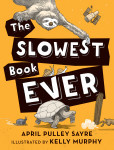 “The Antidote for a Hurried Childhood” was what the Huffington Post called my middle grade nonfiction book, The Slowest Book Ever (Boyds Mills Press, release in April, 2016) in a sneak peek article late by Vicki Cobb last year. This book has line drawings by the fabulous Kelly Murphy. It’s reviewed by the esteemed School Library Journal in their upcoming (February) issue. The wonderful Junior Library Guild will be sharing it with their subscribers in July, 2016.
“The Antidote for a Hurried Childhood” was what the Huffington Post called my middle grade nonfiction book, The Slowest Book Ever (Boyds Mills Press, release in April, 2016) in a sneak peek article late by Vicki Cobb last year. This book has line drawings by the fabulous Kelly Murphy. It’s reviewed by the esteemed School Library Journal in their upcoming (February) issue. The wonderful Junior Library Guild will be sharing it with their subscribers in July, 2016.
ALA Notables: Raindrops Roll, Woodpecker Wham
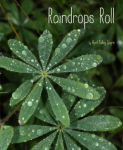
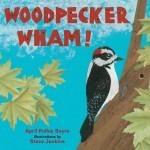
Raindrops Roll and Woodpecker Wham were both named ALA Notables! So thankful to the folks who put time and energy into serving on the ALA Notable Committee and also those on the NCTE Orbus Pictus committee, which recognized Raindrops Roll. This means a lot, encourages my work (and Steve Jenkins’ work on Woodpecker Wham), and hopefully helps readers find these books. There are lots of yummy books on the Notable List this year, check it out: http://www.ala.org/alsc/awardsgrants/notalists/ncb.
November 23, 2015
NCTE, NSTA, Kirkus Raindrops Roll
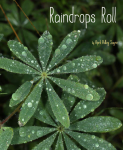 Floored and thrilled that RAINDROPS ROLL was just named
Floored and thrilled that RAINDROPS ROLL was just named
An Orbis Pictus Recommended Book by NCTE, the National Council of Teachers of English. This award for the best nonfiction of 2015 considers ALL the nonfiction books, K-8. They choose a winner, five honor books, and eight recommended books. (Bronze award sticker for recommended.)
An Outstanding Science Trade Book for 2015 by NSTA, the National Science Teachers Association. I’m so excited that folks are loving not only the words but also the photos I took. I work hard to make sure my photos bring wonder and science content so their approval means a lot.
One of the 12 Best Informational Picture Books of the year according to Kirkus. It’s also honored in what is my favorite award category name ever: The Best Picture Books For the Sense-of-Wonder Shelf, again by Kirkus. Doesn’t every library and classroom and home need a “Sense-of-Wonder” shelf? Isn’t that what’s it all about? I’m going to rush out and read the other titles, fiction and nonfiction. As many of you know, even when I was college I identified my goal in life as “helping people feel a sense of wonder in nature.” Feels like life moment achieved that my book fit in such a category.
October 18, 2015
Website Looks Odd. Why?
I am updating my website this week so things may look a little wacky. Don’t worry. The content is still here but the formatting is definitely going to be wild during the remodel.Thanks for your patience.
April Pulley Sayre's Blog
- April Pulley Sayre's profile
- 105 followers


